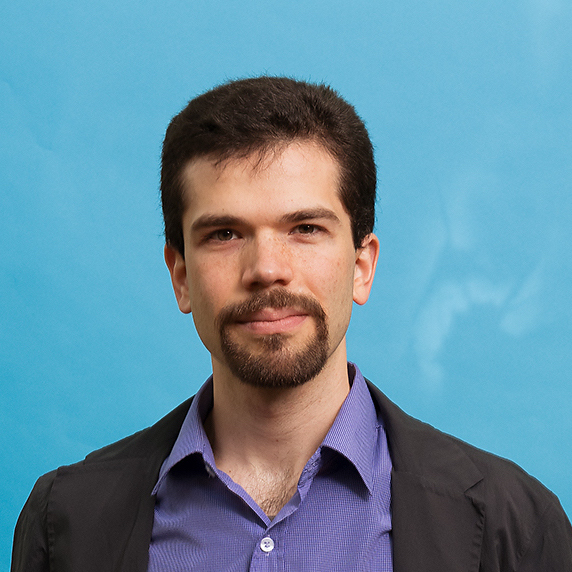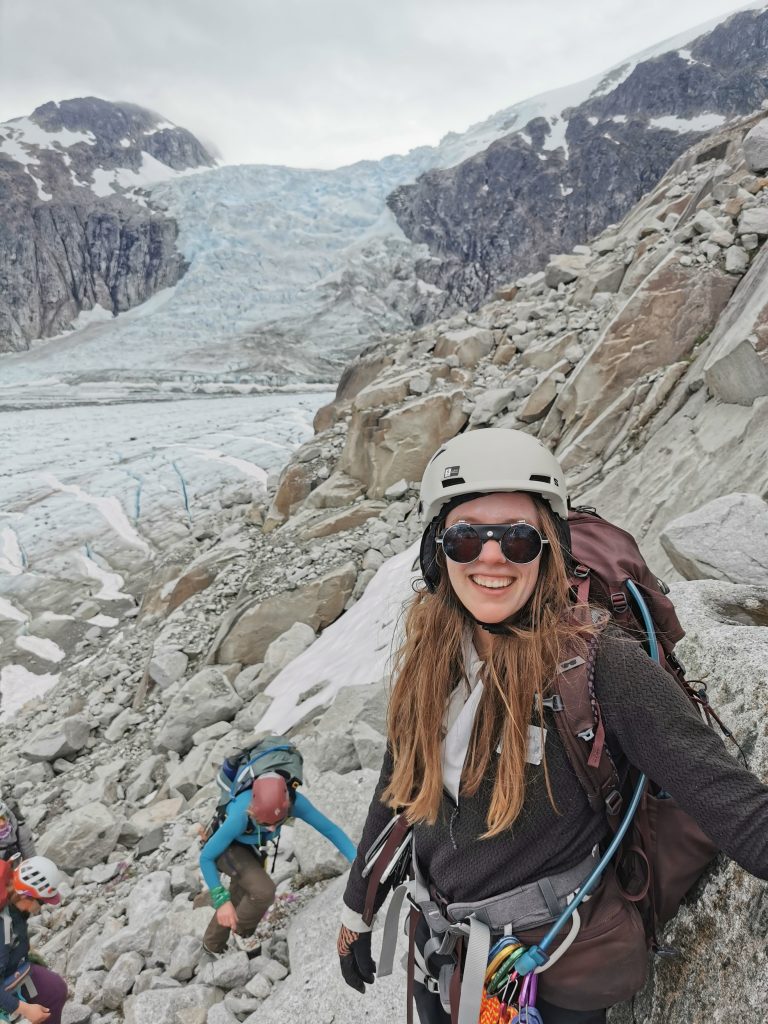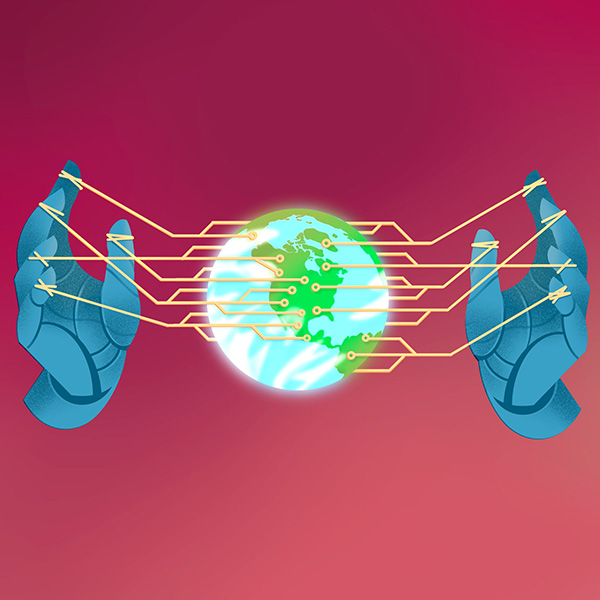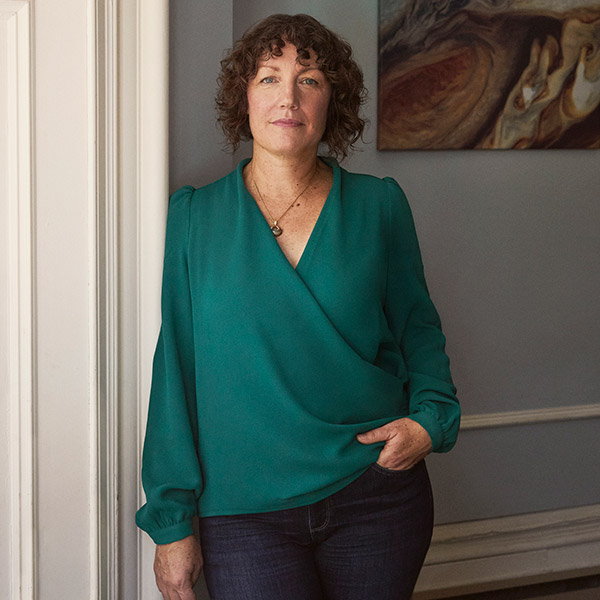The year before he joined McGill, David Rolnick came up with the idea for a scientific paper exploring machine learning’s potential to help address climate change.
It drew a lot of eyeballs – and sparked a flurry of scientific activity in the field.
Co-authored by machine learning experts including AI pioneer Yoshua Bengio, BEng’86, MSc’88, PhD’91, DSc’25, Tackling Climate Change with Machine Learning became one of the most widely read papers in 2019 in any field.
“It really showed that it struck a nerve and that lots of people wanted to be using their skills within the AI community to tackle climate change and didn’t know how,” says lead author Rolnick, an assistant professor who holds a Canada CIFAR AI Chair in the School of Computer Science.
Rolnick also co-founded the global non-profit Climate Change AI. His role in rallying the AI community hasn’t gone unnoticed either. MIT Technology Review named him to its Top 35 Innovators under 35 in 2021.
“We saw part of our mission as building a foundation for the field of AI and climate in a way that would actually lead to real and meaningful impact – draw people into that space but also ensure that it wasn’t based on techno-solutionism [the notion that technology can solve the world’s problems] and hype,” says Rolnick.

As one of the thorniest problems facing our world, climate change is a key research focus at McGill. The University’s ambitious sustainability efforts will be anchored at the new McGill Sustainability Park, now under construction on the former site of the Royal Victoria Hospital, and cut across faculties and disciplines – an interdisciplinary approach that is vital for tackling such a complex challenge.
Rolnick and the graduate students he supervises conduct research at the intersection of machine learning and climate change. Their AI work spans biodiversity monitoring, mapping crops, climate and weather modelling, materials discovery, and more.
The themes identified in the 2019 paper included distilling raw data into actionable information that can be used to shape policy, such as drawing from satellite imagery to pinpoint where flooding is happening in real time and how much carbon is stored in forests.
On electrical grids, machine learning can predict variable elements like supply and demand to ensure electricity isn’t overproduced and wasted. It can also help speed up modelling efforts for climate and weather, as well as the discovery of new materials and chemicals for the energy transition.
“With our team of computer scientists and entomologists, we found about 2,000 species, and 1,000 of them are probably new to science.”
David Rolnick, Canada CIFAR AI Chair in McGill’s School of Computer Science
Rolnick cautions that machine learning is only part of any such solution. Moreover, knowing when AI isn’t helpful is frequently poorly understood. “People often end up jumping at flashy tools instead of thinking deeply about when things actually are going to be useful to them,” he says.
Still, a McGill study published this year in Nature Reviews Biodiversity (Rolnick was one of the co-authors) suggested the use of AI to rapidly analyze vast amounts of biodiversity data could revolutionize conservation efforts. With climate change posing a growing threat to biodiversity, greater knowledge of species is needed to better protect them.
“Our autonomous sensor systems can gather data at scale,” adds Rolnick, noting that identifying rare species and interpreting the data still needs to be done by subject experts. “It’s providing people with data that they can then use to make their decisions.”
“I recently came back from Panama where we were deploying and testing our algorithms for new species discovery in the high-altitude rainforest there. With our team of computer scientists and entomologists, we found about 2,000 species, and 1,000 of them are probably new to science.”
Getting a better handle on changing snowpacks
Julia Kaltenborn came to McGill from Germany to work in Rolnick’s lab. She began her master’s at McGill as a DeepMind Scholar and was fast-tracked into PhD studies where her research involves the cryosphere – large regions in the world covered in snow and ice – and computer modelling.

“We are trying to predict snow water equivalent, which is the amount of water you get from melting snow. Two billion people and two-thirds of the world’s agriculture depend on meltwater from snow and glaciers. Also, for Canada it is particularly important to know how much water is stored in our snowpack and how this water resource will change under global warming,” Kaltenborn says.
However, measuring and estimating snow water equivalent poses a major challenge in water resource management.
Kaltenborn’s research includes working with Environment and Climate Change Canada and the Canadian Space Agency on a planned satellite to obtain data. “They need a machine learning algorithm to rapidly translate the signal from the satellite into snow water equivalent estimates,” she explains.
A collaborative, interdisciplinary effort
Interdisciplinary collaborations will underpin research conducted at the McGill Sustainability Park, which is slated to open in 2028.
In his machine learning lab, Rolnick has actively embraced a collaborative approach that goes well beyond the Roddick Gates.
“Every one of our projects is in partnership with numerous organizations and the relevant application domain,” Rolnick says. For their biodiversity monitoring work, they collaborate with ecology researchers and organizations such as the Montreal Insectarium and the Smithsonian Tropical Research Institute. Collaborations on other research includes NASA Harvest, Intel and Samsung.
“I have been happy to see the growth of the field and a community of people who are prepared to spend the effort to be truly interdisciplinary – to engage with one or more other fields and really build bridges between AI and other research and deployment communities, because that’s what’s necessary,” Rolnick says.


